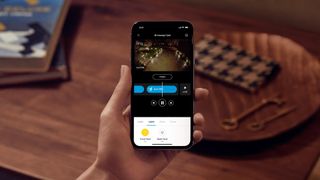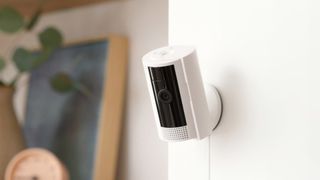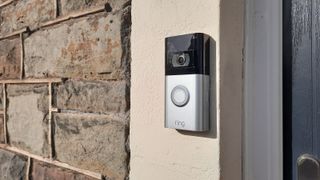Do I need a Ring subscription? Here's what to consider
Is it worth the cost?

Recent updates
In October 2024, Ring Protect subscription plans were renamed Ring Home. The company also renamed its subscription tiers, added a new tier for users in the UK, and added several new features to its two top tiers. This article has been updated to reflect those changes.
So you've chosen a Ring security camera or one of the best video doorbells to protect your home. Now you've got another choice to make: whether or not to sign up for the optional Ring subscription, which brings a number of additional features for a monthly fee.
The subscription is now called Ring Home, but was known as Ring Protect until October 2024. The price stayed the same immediately after the rebrand, but Ring had already increased its individual device pricing by 43% earlier in the year. You'll find more details below.
That means it's even more important to figure out whether or not a Ring Home subscription is right for you. Read on to find out exactly how much you're going to have to pay each month, what Ring's competitors are charging, and whether it's worth the cost.
Does Ring work without a subscription?

Yes, your Ring camera or doorbell will work without a Ring Home subscription – though you won't get all of the features that come with being a subscriber.
If you don't want to pay up, then your Ring device will still happily alert you about any activity that happens in front of your camera or video doorbell. You'll also be able to get a live feed from the camera or doorbell through the mobile app, whether it's when you've had an alert on your device, or any other time. This is the core functionality that's included as standard, and which doesn't need any extra payment.
The big difference comes with video recording. If you don't have a subscription, your video clips aren't stored anywhere. You can't go back and view your camera feed from last week, for example, and if you miss a notification from your video doorbell then you can't then go back several hours later and see footage from what you missed.
How much is a Ring subscription?

There are three Ring Home tiers to choose from. The cheapest, Ring Home Basic, is $4.99 / £4.99 / AU$4.95 per month or $49.99 / £49.99 / AU$49.95 per year (essentially giving you two months free) – a hike of 43% from what it cost prior to March 2024.
Get the best Black Friday deals direct to your inbox, plus news, reviews, and more.
Sign up to be the first to know about unmissable Black Friday deals on top tech, plus get all your favorite TechRadar content.
Ring Home Standard is for multiple cameras and doorbells, as opposed to the Basic plan which is just for a single device. Right now, Ring Home Standard will cost you $10 / £8 / AU$15 a month or $100 / £80 / AU$150 a year. This tier also gives you Extended Live View, which lets you watch footage from your camera for 30 minutes at a time, and the ability to receive doorbell interactions as calls to your phone, making it easier to speak to visitors when you're away from home.
If you're in the US or UK, you can subscribe to Ring Home Premium, which includes everything in Home Standard and adds 24/7 professional monitoring for your alarms. Essentially, your alerts go to Ring as well as you, and either you or the Ring team can request an emergency response to an incident.
Ring Home Premium also offers 24/7 recording for eligible wired cameras, which even captures things happening outside the motion capture zone, and Continuous Live View, which allows you to watch your camera feed for as long as you like, provided the camera has 24/7 recording enabled.
Ring Home Premium costs $19.99 / £15.99 a month or $200 / £159.99 a year. There are currently no details about when it will be available in Australia, or how much it will cost there.
What happens if I don't subscribe to Ring Home?

If you don't subscribe to Ring Home, your camera or doorbell won't suddenly become useless: you'll still get alerts when something happens, and you'll still be able to view a live video feed at any time. You'll also be able to use two-way audio – to talk to a delivery driver at the door, for example.
What the Ring Home Basic (for a single device) and Ring Home Standard (for multiple devices) plans add are extended video storage facilities, so you can go back and look at older footage and alerts. You also get smarter alerts, so your cameras can recognize the difference between people, packages, and anything else that might be passing.
It's worth bearing in mind that new Ring cameras and doorbells usually come with a 30-day free trial of the Ring Home service. If you're wondering why you're getting an extended video history without having paid any money, that's probably why – when the free trial ends, you'll be left with just the basic functionality.
How long are Ring videos saved without a subscription?

One of your biggest concerns if you're not paying for a Ring Home subscription is likely to be the status of your videos. This is the crux of the free plan vs paid plan debate: if you're a paid up subscriber, then your recorded videos (as triggered by motion sensing) are all available from the cloud for 30 days.
You can actually adjust this to suit yourself: you can dial down the storage time to one day, or all the way up to 180 days (if you're in the UK – the US and Australia limit is 30 days). If you need videos for longer than the limit you've set, you can download them to a local device from the cloud.
Without a subscription, there's no saving of videos at all: you can't go back and look at older alerts, and you can't record footage from the live view either (if you need evidence of something happening on your property). All you can do is look at the live video feed as it's coming through your cameras or doorbells.
Is it worth paying for a Ring subscription?

So, is it worth paying for a Ring Home subscription? That's the million dollar question – or rather the $4.99 / £4.99 / $4.95 per month question. Ultimately it's down to how much you're willing to spend, and how useful you find video storage: it's probably more important to you if you're not always able to check your phone right away, for instance.
We should also point out that several other security camera and doorbell companies charge for similar subscriptions too: Google Nest Aware plans start at $8 / £6 / AU$12 per month or $80 / £60 / AU$120 per year, while Arlo Secure will set you back from $7.99 / £4.49 / AU$7.99 per month (if you're in the UK, you can also pay £44.90 per year).
There are also security cameras and video doorbells that don't need a subscription, and which can store video locally – see the Eufy range of products for one example. You might want to compare these other products and their subscription plans (or lack of them) before deciding whether or not to pay for a Ring subscription.
You might also like

Dave is a freelance tech journalist who has been writing about gadgets, apps and the web for more than two decades. Based out of Stockport, England, on TechRadar you'll find him covering news, features and reviews, particularly for phones, tablets and wearables. Working to ensure our breaking news coverage is the best in the business over weekends, David also has bylines at Gizmodo, T3, PopSci and a few other places besides, as well as being many years editing the likes of PC Explorer and The Hardware Handbook.